You searched for: poland
<< Previous | Displaying results 1301-1349 of 1568 for "poland" | Next >>
-

-
Theresienstadt
ArticleThe Theresienstadt camp/ghetto served multiple purposes during its existence from 1941-45 and had an important propaganda function for the Germans. Learn more.

-
Wartime Fate of the Passengers of the St. Louis
ArticleIn May 1939, the St. Louis set sail from Germany to Cuba. Most of the passengers, fleeing Nazi Germany, were denied entry. Learn more about their fates.
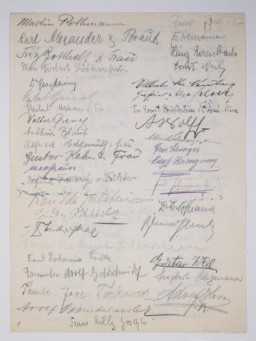
-
Jasenovac
ArticleJasenovac camp complex operated between 1941-1945 in the so-called Independent State of Croatia. Learn more about conditions and prisoners at Jasenovac.
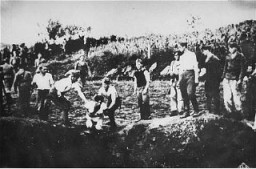
-
Locating the Victims
ArticleThe Germans and their collaborators used paper records and local knowledge to identify Jews to be rounded up or killed during the Holocaust.

-
Nuremberg Trials
ArticleTrials of top surviving German leaders for Nazi Germany’s crimes began in Nuremberg after World War II. Read about the Nuremberg trials.
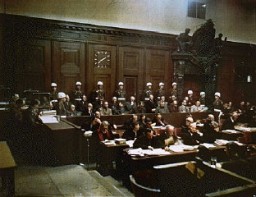
-
1945: Key Dates
ArticleExplore a timeline of key events during 1945 in the history of Nazi Germany, World War II, the Holocaust, and liberation and the aftermath of the Holocaust.

-
Flossenbürg: Key Dates
ArticleExplore a timeline of the history of the Flossenbürg camp in the Nazi camp system from its establishment in 1938 until liberation in 1945.

-
Nicholas Winton and the Rescue of Children from Czechoslovakia, 1938–1939
ArticleNicholas Winton organized a rescue operation that brought hundreds of children, mostly Jewish, from Czechoslovakia to safety in Great Britain before the outbreak of WWII.

-
Peter Bergson
ArticleLearn more about American Zionist and activist Peter H. Bergson (born Hillel Kook).
-
Foehrenwald Displaced Persons Camp
ArticleAfter WWII, many Holocaust survivors, unable to return to their homes, lived in displaced persons camps in Germany, Austria, and Italy. Read about Foehrenwald DP camp.
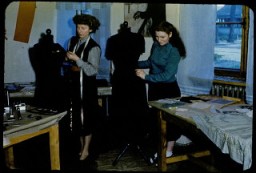
-
Wilhelm Keitel: Biography
ArticleField Marshal Wilhelm Keitel was commander of all German armed forces during World War II. Learn about his military career and postwar trial.

-
The "Night of Broken Glass"
ArticleOn November 9–10, 1938, the Nazi regime coordinated a wave of antisemitic violence in Nazi Germany. This became known as Kristallnacht or the "Night of Broken Glass."

-
Mohamed Helmy
ArticleDr. Mohamed Helmy and Frieda Szturmann helped save a Jewish family in the heart of Nazi Germany. Helmy was the first Arab recognized as Righteous Among the Nations.

-
Benito Mussolini
ArticleBenito Mussolini’s Fascist takeover of Italy was an inspiration and example for Adolf Hitler and the Nazi Party in Germany. Learn more.
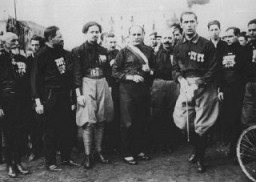
-
Avraham Tory
ArticleLearn about the Kovno ghetto diary and other documents Avraham Tory saved in a secret archive that documented life in the ghetto.
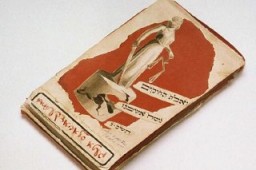
-
Topf and Sons: An “Ordinary Company”
ArticleMany German businesses were involved in the policies of the Third Reich. Learn about Topf and Sons, which sold ovens to the SS for major concentration camps in Germany.
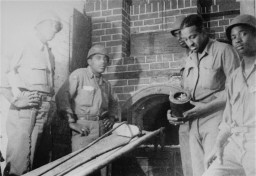
-
Adolf Eichmann Found Guilty
Timeline EventDecember 15, 1961. On this date, Adolf Eichmann was found guilty of crimes against the Jewish people and sentenced to death.
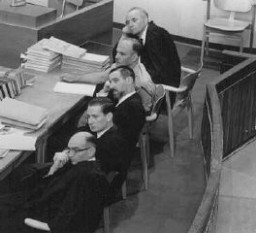
-
Former gas chamber in the Auschwitz main camp
PhotoPostwar photograph of gas chamber for mass murder in the Auschwitz main camp. Poland, ca. 1947. In mid-August 1940, Auschwitz concentration camp authorities put into operation a crematorium adjacent to a morgue. This building was located just outside the boundaries of the Auschwitz main camp. In September 1941, the morgue was converted to a gas chamber for mass murder where several hundred people could be killed at a time. This gas chamber was used until December 1942, though the crematorium remained…
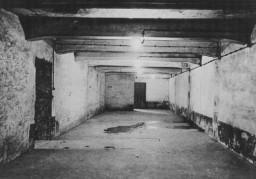
-
Frank Liebermann
ArticleExplore Frank Liebermann’s biography and learn about his experiences of antisemitism in his home town in Germany before World War II.
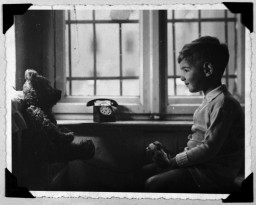
-
Introduction to the Holocaust
ArticleLearn about the Holocaust, the systematic, state-sponsored persecution and murder of six million Jews by the Nazi regime and its collaborators.

-
Hajj Amin al-Husayni: Wartime Propagandist
ArticleFormer Mufti of Jerusalem Hajj Amin al-Husayni was an exiled political leader who sought an alliance with the Axis Powers. Learn about his wartime propaganda efforts.
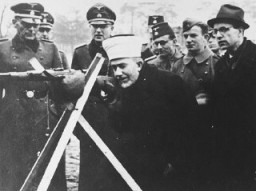
-
Timeline of the German Military and the Nazi Regime
ArticleKey dates illustrating the relationship between Germany’s professional military elite and the Nazi state, and the German military’s role in the Holocaust.
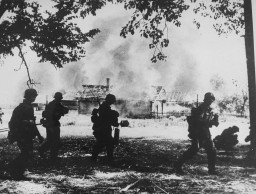
-
Martin Weiss
ArticleMartin Weiss and his family were deported to Auschwitz in 1944. Explore Marty’s biography and his description of arrival in Auschwitz.

-
Miriam Lewent describes deportation to a village near Tomsk, Siberia
Oral HistoryMiriam and her family fled their home when the Germans invaded Poland in 1939. They were interned by Soviet forces and deported to Siberia. Near the city of Tomsk, Miriam cut trees to earn food rations. When the Soviet Union went to war with Germany in June 1941, the Soviets released Miriam and her family. They sold their Red Cross rations for train fare and intended to return to Poland, but most of the family settled in Kazakhstan during the rest of the war. There, her father taught Hebrew to Jewish…

-
Charlene Schiff describes being caught while trying to smuggle food into the Horochow ghetto
Oral HistoryBoth of Charlene's parents were local Jewish community leaders, and the family was active in community life. Charlene's father was a professor of philosophy at the State University of Lvov. World War II began with the German invasion of Poland on September 1, 1939. Charlene's town was in the part of eastern Poland occupied by the Soviet Union under the German-Soviet Pact of August 1939. Under the Soviet occupation, the family remained in its home and Charlene's father continued to teach. The Germans…
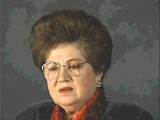
-
Charlene Schiff describes forced labor in the Horochow ghetto
Oral HistoryBoth of Charlene's parents were local Jewish community leaders, and the family was active in community life. Charlene's father was a professor of philosophy at the State University of Lvov. World War II began with the German invasion of Poland on September 1, 1939. Charlene's town was in the part of eastern Poland occupied by the Soviet Union under the German-Soviet Pact of August 1939. Under the Soviet occupation, the family remained in its home and Charlene's father continued to teach. The Germans…

-
Wilek (William) Loew describes the roundup of Jews during August 1942 deportation from Lvov to Belzec
Oral HistoryWilek was the son of Jewish parents living in the southeastern Polish town of Lvov. His family owned and operated a winery that had been in family hands since 1870. Wilek's father died of a heart attack in 1929. Wilek entered secondary school in 1939. Soon after he began school, World War II began with the German invasion of Poland. Lvov was in the part of eastern Poland annexed by the Soviet Union. Although the Soviets took over Wilek's home and the family business, Wilek was able to continue his…

-
Isadore Helfing describes labor in the Treblinka camp
Oral HistoryIsadore was born to a Jewish family in Kielce, Poland. Germany invaded Poland in September 1939. Isadore and his family were forced into the Kielce ghetto, which was established in April 1941. When his parents were deported to the Treblinka killing center in 1942, Isadore went with them rather than remaining behind for forced labor. After arrival at the camp, Isadore hid in a pile of bodies. His parents were killed. Isadore survived by working in the camp. On August 2, 1943, prisoners at Treblinka revolted…
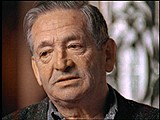
-
Wilek (William) Loew describes forced evacuation from Auschwitz
Oral HistoryWilek was the son of Jewish parents living in the southeastern Polish town of Lvov. His family owned and operated a winery that had been in family hands since 1870. Wilek's father died of a heart attack in 1929. Wilek entered secondary school in 1939. Soon after he began school, World War II began with the German invasion of Poland. Lvov was in the part of eastern Poland annexed by the Soviet Union. Although the Soviets took over Wilek's home and the family business, Wilek was able to continue his…
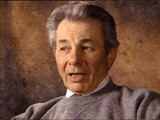
-
Sophie Turner-Zaretsky describes moving to London after liberation and discovering her Jewish heritage
Oral HistorySophie was born Selma Schwarzwald to parents Daniel and Laura in the industrial city of Lvov, two years before Germany invaded Poland. Daniel was a successful businessman who exported timber and Laura had studied economics. The Germans occupied Lvov in 1941. After her father's disappearance on her fifth birthday in 1941, Sophie and her mother procured false names and papers and moved to a small town called Busko-Zdroj. They became practicing Catholics to hide their identities. Sophie gradually forgot that…
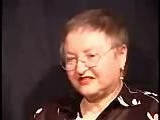
-
Charlene Schiff describes difficulties in gaining entry to the United States in the aftermath of the Holocaust
Oral HistoryBoth of Charlene's parents were local Jewish community leaders, and the family was active in community life. Charlene's father was a professor of philosophy at the State University of Lvov. World War II began with the German invasion of Poland on September 1, 1939. Charlene's town was in the part of eastern Poland occupied by the Soviet Union under the German-Soviet Pact of August 1939. Under the Soviet occupation, the family remained in its home and Charlene's father continued to teach. The Germans…
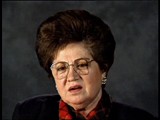
-
Killing Centers: In Depth
ArticleThe Nazis established killing centers in German-occupied Europe during WWII. They built these killing centers for the mass murder of human beings.

-
Heinrich Himmler
ArticleSS Chief Heinrich Himmler was chief architect of the "Final Solution." Learn more about Himmler, one of the most powerful men after Hitler in Nazi Germany.

-
The German Military and the Holocaust
ArticleThe German military played a vital role in the consolidation of Nazi power and persecution and mass murder of Jews and other groups. Learn more
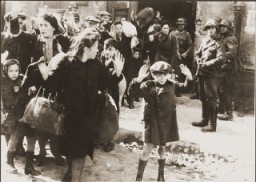
-
Kristallnacht
ArticleOn November 9–10, 1938, the Nazi regime coordinated a wave of antisemitic violence. This became known as Kristallnacht or the "Night of Broken Glass." Learn more

-
Life After the Holocaust: Norman Salsitz
ArticleAfter WWII and the fall of the Nazi regime, Holocaust survivors faced the daunting task of rebuilding their lives. Listen to Norman Salsitz's story.
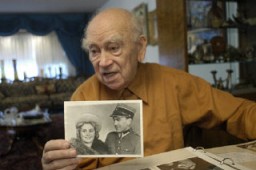
-
Peter Philipps
ID CardPete grew up in Essen, a major industrial city on Germany's Ruhr River. His father worked as a cattle hide dealer for an international trading company in nearby Muehlheim. His mother was a designer for a fashionable women's dress shop. Pete, his younger twin brothers, and parents lived together in an apartment. 1933–39: Pete had barely passed his first birthday when the Nazis came to power. His father realized the danger that now faced Jews in Germany, and the family left for Prague, Czechoslovakia, in…
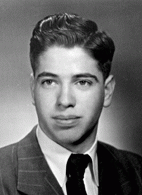
-
Tania Marcus
ID CardTania grew up in Smorgonie, a Polish town where Jews constituted more than half of the population. Her father was a successful businessman who sold farming equipment and purchased flax for export. Her grandfather, an affluent merchant, traveled frequently and brought the first truck to Smorgonie. The Marcuses took part in the town's vibrant Jewish culture, attended the theater, and hosted discussions about art in their home. 1933–39: On September 1, 1939, German troops invaded Poland, triggering World…
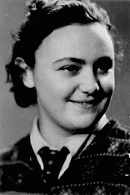
-
Beno Helmer
ID CardBeno was the oldest of three children in a Jewish family. His mother, originally from Austria, came to Czechoslovakia after World War I. Beno's father, a Swedish Jew, arrived there in search of work and became a successful merchant. The German-speaking Helmer home was frequently full of guests. Every day some students from the local rabbinical academy were invited to join the family for a meal. 1933-39: Beno's parents sent him to Budapest to attend high school. Later, because of his talent with languages,…
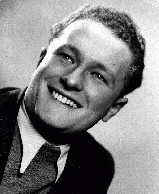
-
Peter Somogyi
ID CardPeter and his twin brother, Thomas, were the youngest of three children born to an observant Jewish family. They lived in Pecs, an industrial center where goods such as bricks and ceramics were produced. Peter's father owned a prosperous business selling accessories and parts for cars, motorcycles and bicycles. He was also a regional sales representative for Ford automobiles. 1933-39: A German nanny took care of Peter, Thomas, and their older sister. She taught them German and they became quite fluent.…
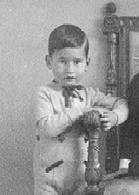
-
Rena Gani
ID CardRena and her family were Romaniot Jews, a group that had lived in Greek cities and the Balkans for more than 1,100 years. The town of Preveza, located on the Ionian seashore, had 300 Jews. Rena's father had a small textile shop and her mother stayed at home to care for Rena, her sister and her three brothers. 1933-39: When Rena's family moved to the nearby town of Ioannina, she completed Jewish primary school there. The school was sponsored by the French organization Alliance Israelite Universelle, and…
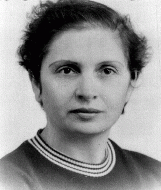
-
Esther Morgensztern
ID CardThe fourth of five children, Esther was born to Jewish parents living 35 miles east of Warsaw in the small predominantly Jewish town of Kaluszyn. Esther's mother and grandmother ran a newspaper kiosk in the town, and her father worked as a clerk at the town hall. 1933-39: Next year would have been Esther's last year at school, but she won't be able to graduate. War has broken out between Poland and Germany, so the schools have closed. A big battle took place here in Kaluszyn. The town was heavily shelled…
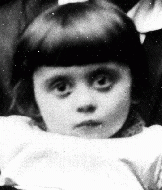
-
Jozef Rapaport
ID CardJozef was raised in a religious Jewish family. When he was a baby, his father died and his mother was left to care for him and his three older sisters. The family was poor, but Jozef was determined to have a good education. He put himself through university in Prague, and then went on to earn a Ph.D. in economics in Vienna. In 1931 he married Leah Kohl, and the couple settled in Warsaw. 1933-39: The Rapaports lived in the suburbs, and Jozef worked as a banker. His daughter, Zofia, was born in 1933. Jozef…
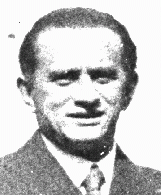
-
Mario Finzi
ID CardMario was the only child of a Jewish couple who were secondary school teachers in Bologna. Like many Italian Jews, his family was well-integrated into Italian society. Even though Fascist leader Benito Mussolini came to power in 1922, Jews in Italy continued to live in safety. Mario played piano as a hobby. When he finished high school in Bologna, Mario went on to study law. 1933-39: In 1938 Mario began practicing law in Milan. But later that year, Mussolini's government issued "racial" laws that…

-
Reidar Dittmann
ID CardReidar was the third of four sons born to religious Lutheran parents in a small seafaring and whaling town along the Norwegian coast. Reidar's father was a civil servant. Reidar attended public school and dreamed of becoming a musician. 1933-39: Although Reidar was not interested in politics, he sympathized with his Jewish neighbors who had come as refugees from Germany. In fall 1939 he was saddened when Germany attacked Poland and the USSR attacked Finland. Several days later, his oldest brother passed…

-
Martin Spett
ID CardKnown as Monek, Martin was the elder of two children raised by Jewish parents in the large town of Tarnow. His mother was an American citizen who had been raised in Poland. His father worked at the city's tax office. As a child, Martin liked to collect stamps and catch lizards. His parents wanted him to be a pharmacist, but he wanted to be an artist when he grew up. 1933-39: When the Germans occupied Tarnow in September 1939 after war began, Martin was 10 years old. The soldiers, in beautiful uniforms,…
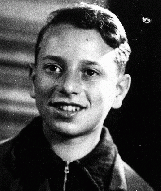
-
Edith Fuhrmann Brandmann
ID CardEdith's village of Kriesciatik was located on the border between Romania and Poland. Her Jewish parents owned a large ranch where they raised cattle and grew sugar beets. They also owned a grocery store. Edith had a brother, Jacob, and a sister, Martha. At home the family spoke Yiddish and German, and Edith learned Romanian after she began school. 1933-39: Edith's village was by a river, and she spent summer days by the water with her friends, swimming and playing. Her mother would pack her bread and…

-
Pawel Zenon Wos
ID CardPawel was the oldest of four children born to Roman Catholic parents in Poland's capital of Warsaw. Pawel's father had worked for the Polish merchant marine before starting his own textile business in 1930. The family moved to a comfortable apartment near the Royal Castle and the Vistula River. Pawel excelled in sports, including basketball and tennis. His favorite sport was rowing. 1933-39: In May 1939 Pawel became an army reserve officer and went to training camp near Augustow. On the morning of…

